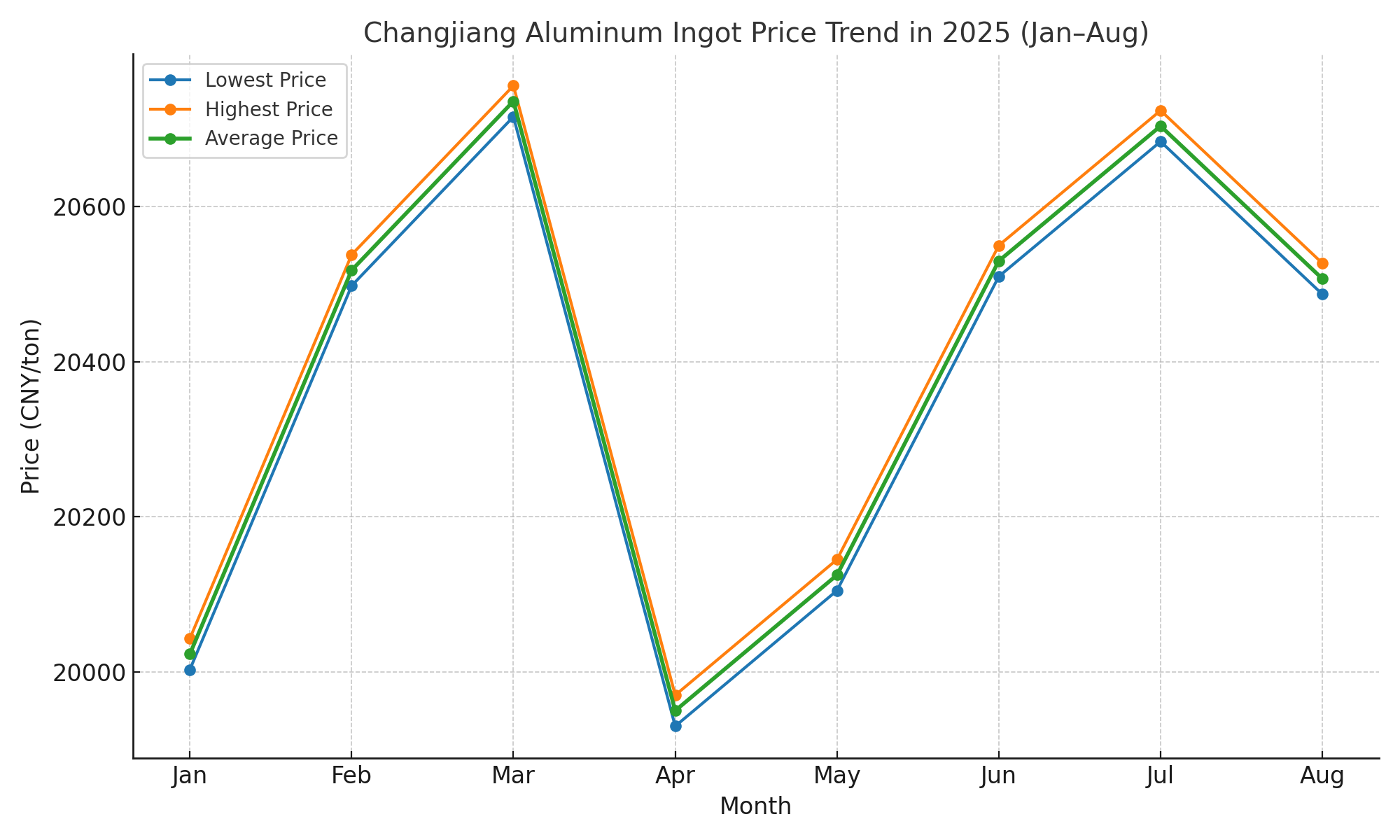Sustainable Design and Energy-Efficient Aluminium Profiles
The Role of Eco-Friendly Materials in Modern Architecture
Aluminum profiles have become really important in green building because they can be recycled over and over again. About 75 percent of all aluminum made so far is still being used somewhere today according to the Circular Economy Institute report from last year. Many architects now prefer specifying recycled aluminum products since they come with much lower carbon footprints. Making recycled aluminum takes around 95% less energy than creating new aluminum from scratch, yet it performs just as well structurally speaking. The fact that aluminum can go through this recycling cycle repeatedly makes it great for passive design approaches too. Buildings constructed with aluminum tend to have lighter exteriors which actually means foundations don't need to bear as much weight compared to similar structures built with steel alternatives. Studies show these lighter buildings can cut down on foundation load requirements by roughly between 18 to 22 percent.
How Aluminium Profiles Enhance Building Energy Performance
Thermal break technology in modern aluminium window profiles improves insulation by up to 40%, significantly reducing HVAC energy demand in commercial buildings. Combined with anodized finishes that reflect 87% of solar radiation, these systems enhance dynamic shading performance, delivering 15–30% annual cooling cost savings in tropical climates.
Integration of Passive Design with Lightweight Aluminium Systems
Aluminium’s high strength-to-weight ratio (690 MPa tensile strength at 2.7 g/cm³ density) makes it ideal for integrating with bioclimatic design strategies:
- Slim-profile solar shading lattices maximize daylight penetration
- Aerodynamic facade geometries promote natural ventilation
- Modular extrusions allow for airtight seals in pressurized environments
These features support energy-efficient building operation without sacrificing structural integrity or design flexibility.
Case Study: Net-Zero Buildings Using High-Performance Aluminium Facades
The Singapore Green Tower (2024) exemplifies how high-performance aluminium facades can enable net-zero outcomes. Its adaptive three-layer facade consists of:
- An outer layer of recycled aluminium sunscreens with integrated photovoltaics
- A middle pressurized cavity for passive airflow control
- Inner low-E coated glazing within thermally broken frames
This system generates 142% of the building’s annual energy needs through on-site renewables. At end-of-life, 92% of the aluminium components are recyclable, reinforcing circular economy principles.
Green Production: Low-Carbon Aluminium Manufacturing Breakthroughs
Advancements in Low-Carbon Aluminium Production Technologies
Renewable-powered electrolysis has reduced aluminium production emissions by 60%, with hydrogen-based smelting eliminating direct CO₂ emissions in pilot facilities. These innovations support the industry’s goal to decarbonize 37% of electricity-related emissions by 2030, as demonstrated by collaborations achieving 50–70% lower carbon footprints (2025 Green Aluminium Market Report).
Closed-Loop Recycling and the Circular Economy in Extrusion
Modern aluminium extrusion uses up to 95% recycled content in closed-loop systems, cutting energy demand by 90% compared to primary production. Advanced sorting technologies ensure indefinite reuse without degradation, delivering carbon savings equivalent to removing 4 million internal combustion engine vehicles from roads annually.
Innovations in Sustainable Smelting and R&D Trends
Third-generation inert anode technology has eliminated perfluorocarbon emissions—greenhouse gases 9,200 times more potent than CO₂. Carbon capture systems now being scaled in Europe aim to reduce emissions from existing smelters by 85% by 2030.
Balancing Rising Demand with Decarbonization Goals
Despite projected 5.65% annual demand growth through 2034, manufacturers are meeting rising needs sustainably through hybrid models that combine solar-powered smelters with urban mining networks. These approaches deliver 40% lower emissions per tonne and fulfill 78% of new production via renewable-powered facilities.
Architectural Innovation Through Design Flexibility and Customization
Minimalist Profiles and Slim Sightlines for Modern Aesthetics
Aluminium profiles that are extra slim are changing what we think about when it comes to minimalist architecture. They allow for much better glass to frame ratios which means more natural light gets inside buildings. According to a recent study from 2024 on material efficiency, structures with these thin profiles under 1.5mm in sightline actually let in around 18 percent more daylight compared to regular systems. The effect? Spaces feel bigger and there's this great connection between indoors and outdoors that architects really want for both city homes and businesses nowadays.
Bold Colour Finishes Reshaping Urban Skylines
Anodized and powder-coated aluminium now offers over 300 certified color options with 25-year fade resistance, transforming structural elements into expressive design features. Demand for colored facades has risen 40% since 2022, driven by urban initiatives like Singapore’s Color Planning Guidelines that promote vibrant, human-centric streetscapes.
Tailored Extrusions and Digital Tools for Bespoke Solutions
These days parametric design tools work right alongside extrusion machines, which lets manufacturers create really precise custom shapes even when dealing with complicated geometry. Take one big airport terminal as an example they needed to make around 872 different profile types for that wavy roof structure. The result? A roof that not only stands up structurally but looks pretty amazing too. What's interesting is how this whole digital process cuts down on wasted materials by about 30 something percent compared to old school methods. So basically it allows architects to get creative without breaking the bank on resources or harming the environment.
Modular and Prefabricated Aluminium Facade Systems on the Rise
Growth of Modular Construction Using Aluminium Profiles
The modular construction sector is really taking off these days. Market forecasts suggest it could hit around $189 billion by 2032, according to Kaopiz research from last year, growing at roughly 7% annually. Aluminum stands out as a great material choice because it combines light weight with lasting strength, making it perfect for those pre-made exterior panels that builders are increasingly using. These panels cut down on site waste quite a bit too, somewhere between 30 to 50 percent depending on the project specifics. What's interesting is how automated extrusion technology has evolved recently. Manufacturers can now create custom shaped profiles that match architects' blueprints almost perfectly, which helps maintain quality standards even when working on massive building projects spanning multiple sites.
Precision Engineering for Off-Site Assembly
Advanced CNC machining and BIM integration enable factory-level precision in assembling aluminium components. Prefabricated curtain wall systems, such as those highlighted in future facade trends for 2025, integrate seals, insulation, and glazing off-site, enabling 60% faster installation. This reduces weather delays and lowers carbon emissions through optimized logistics.
Case Study: High-Rise Retrofit with Prefabricated Aluminium Facades
A 35-story commercial tower in a seismic zone completed a full facade retrofit in 12 weeks—40% faster than conventional methods—using modular aluminium cladding. The pre-assembled units featured fire-resistant coatings and thermal breaks, improving energy efficiency by 25% without disrupting tenant operations.
Market Outlook: Modular Aluminium Systems (2025–2030)
Demand for prefabricated aluminium facades is expected to grow 7.2% annually, fueled by urban developers prioritizing speed, quality, and decarbonization. By 2027, over 75% of new high-rises in North America and the Asia-Pacific region will adopt modular systems, driven by tightening building codes and rising material efficiency standards.
Durability, Lightweight Performance, and Structural Advantages of Aluminium
Aluminium profiles are essential in modern construction, combining durability with structural efficiency to meet demands in seismic zones and extreme environments.
Superior Performance in Seismic and Harsh Climate Zones
Aluminum naturally resists corrosion, which means it lasts much longer in places near the coast or in industrial areas where salt air and pollution eat away at other materials over time. The metal stays strong even when temperatures swing wildly between really cold (-40 degrees Celsius) all the way up to quite hot conditions around 300 degrees Celsius. When looking at buildings in earthquake zones, aluminum's ability to bend rather than break helps reduce those dangerous stress points that can cause damage during tremors. According to recent studies published in the Materials Resilience Report for 2024, structures made with aluminum experience about 32 percent less stress compared to traditional steel frames. That makes aluminum not just practical but actually safer option for construction projects located in regions prone to earthquakes.
Aluminium vs. Steel: Structural Efficiency Compared
| Parameter | Aluminium | Steel |
|---|---|---|
| Weight | 2.7 g/cm³ | 7.85 g/cm³ |
| Corrosion Resistance | Natural oxide layer | Requires coatings |
| Seismic Performance | Flexible energy dissipation | Brittle fracture risk |
Aluminium is 63% lighter than steel, significantly reducing transportation and installation costs. Its high strength-to-weight ratio allows for slimmer, more efficient profiles without compromising load-bearing capacity—ideal for earthquake-resistant and coastal infrastructure.
FAQ Section
What makes aluminium profiles environmentally sustainable?
Aluminium profiles are environmentally sustainable due to their ability to be recycled repeatedly without losing their structural integrity. The recycling process consumes 95% less energy compared to producing new aluminium.
How do aluminium profiles improve energy efficiency in buildings?
Aluminium profiles improve energy efficiency through features like thermal break technology and anodized finishes that enhance insulation and reflect solar radiation, respectively. These attributes significantly reduce cooling costs in buildings.
Why are modular aluminium facade systems becoming popular?
Modular aluminium facade systems are popular due to their lightweight and durable properties, which reduce site waste, lower installation time, and improve precision in construction.
How does aluminium compare to steel in terms of structural efficiency?
Aluminium is 63% lighter than steel and offers better corrosion resistance and seismic performance, making it a more efficient choice for many construction projects.
Table of Contents
- Sustainable Design and Energy-Efficient Aluminium Profiles
- Green Production: Low-Carbon Aluminium Manufacturing Breakthroughs
- Architectural Innovation Through Design Flexibility and Customization
- Modular and Prefabricated Aluminium Facade Systems on the Rise
- Durability, Lightweight Performance, and Structural Advantages of Aluminium
- FAQ Section

